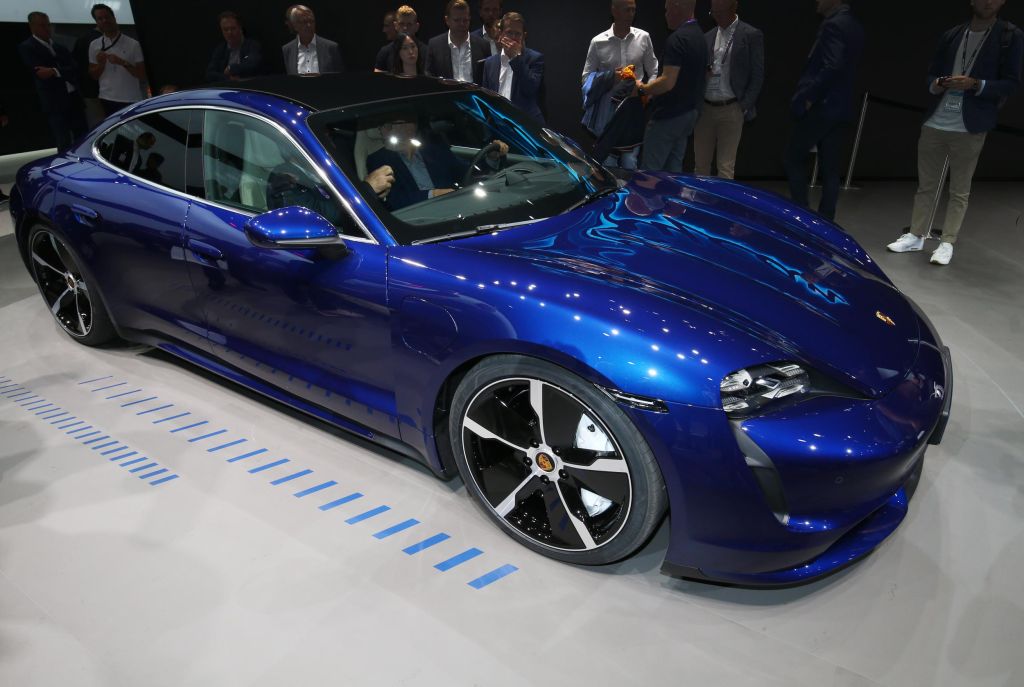We attended the one at the wind farm in Pingtan Island, about 150km from Fuzhou in the Fujian province, China to suggest wind power, with the simultaneous unveiling being done at a solar centre in Berlin (solar power) and Niagara Falls in Toronto (hydropower).
The name Taycan (pronounced Thai-kahn) means a "lively young horse" and is inspired by the Porsche crest that includes a rearing stallion at its centre, which was carried since 1952.

The Taycan might not be powered by the engines that we are familiar with but potent electric motors, using the Turbo and Turbo S names is all part of conforming to the Porsche tradition and character.
Since Porsche’s normal engine range as well as the hybrid variants carry these labels to emphasise its power heritage, continuing the practice with the electric Taycan establishes the sporty underlining that it is imbued with.
There is no denying its Porsche character in outright performance; the Taycan Turbo accelerates from 0 to 100kph in 3.2 seconds, 160kph in 6.9 seconds and 200kph in 10.6 seconds and a top speed of 260kph.
This impressive charge is fully expected with 625PS on tap and 680PS with overboost launch
function and 850Nm of maximum torque.
If you want more, the Taycan Turbo S would meet your demand nicely by sprinting to 100kph in 2.8 seconds, 160kph in 6.3 seconds and 200kph in 9.8 seconds, while the top speed stays the same at 260kph.

Apart from the Taycan Turbo S being l0kg lighter at 2,295kg (kerb weight), it has a higher 761PS overboost and 1,050Nm maximum torque.
The Taycan comes with a two-speed transmission that Porsche says enables fast acceleration and high-end speed.
Interestingly, Porsche says the Taycan could do more than 20 quick acceleration sprints and yet consume minimal electrical power.
It comes equipped with two electric motors, one for the front axle and the other for the rear, which serves its electric all-wheel drive function better.
The heady power details come from the fact that its operating voltage of 800 volts is double that of the current norm of 400 volts that other car manufacturers apply to their respective EV (electric vehicle) range.
With a combined electricity consumption of 26.0kWh/100km (26.9kWh/100km for the Taycan Turbo S), it has enough electrical ‘juice’ from its battery to cover between 381km and 450km (fully tested on actual road driving).
Porsche says this 800-volt technology allows the Taycan battery to be charged quicker at a maximum of 270 kilowatts from 5% to 80% in about 23 minutes.
While this might require new 350kW charging stations that Porsche would provide at its respective sales point, the Taycan could also be charged using the lower output 400-volt charging system that would do the job over a longer time.

Varga.
Porsche has given the Taycan two charging ports, one on each side of the car on the front wheel arches; and it could be charged overnight on 240-volt AC power but would take 11 hours for a full charge.
Much of the electrical technology applied to the Taycan was first featured on the prototype Mission E in 2015 but in a lot more improved form with strides in advancements in this area.
Carrying on the Porsche sporty tradition also means the Taycan has to look every inch a car from this highly recognised marque, and it does.
Style Porsche Exterior Design director Peter Varga, who subscribes very much to the 911 profile as a true representation of the Porsche marque, has followed his passions to the letter in the Taycan body styling.
At a glance, you could mistake the Taycan for a 911, not least because of its familiar Porsche ‘face’ but its body outline in general.
However, the 911 has more muscular rear shoulders and the four-door Taycan has gentler haunches although the overall body styling still smacks of the marque’s sports car heritage.
To underline that fact is its aerodynamic co-efficient value (Cd) being a very low 0.22 (025 for the Taycan Turbo S because of additional body details) despite the front headlamps being recessed units (in a somewhat boomerang curvature) and not fully flushed with the body.
Peter Varga says the wheels with its unique flat and broad spokes are designed in-house with an alloy wheel supplier and play its part in the car’s aerodynamics.

In body dimensions, it’s between the 911 and Panamera, and hints of the latter could also be gleaned from the Taycan’s body design.
We like the feature where you merely swipe your hand at a point near the charging outlet and the cover would open electrically; it also closes in the same way and applies to both outlets.
The dashboard sees a full length panel offering touchpoints for some functions and carrying relevant information to support the equally sizeable instrument panel that faces the driver.
Keeping to tradition is the analogue clock located on top of the dashboard that seems out of place in an electric vehicle, but set ways are not meant to be broken in this case.
The seats and door panels are finished in sustainable leather-free material to complement its EV image although classic leather is available as an option.

Being a Porsche, the Taycan prices are reflective of the marque it represents, being not far cheaper than the Panamera.
Porsche says it is investing six billion euros (RM27.5bil) into electric vehicle development till 2022 and expects half of its model range to be electrically powered, either fully or via hybrids, by 2025.
As it were, the fully-electric Cross Tourismo SUV is already on the cards.
The Taycan is produced at a new dedicated facility in Stuttgart and cars are expected to be delivered to European customers towards the end of the year.
For Malaysia, the Taycan is expected to be launched around mid-2020 as part of its progressive inroad to Asia.











